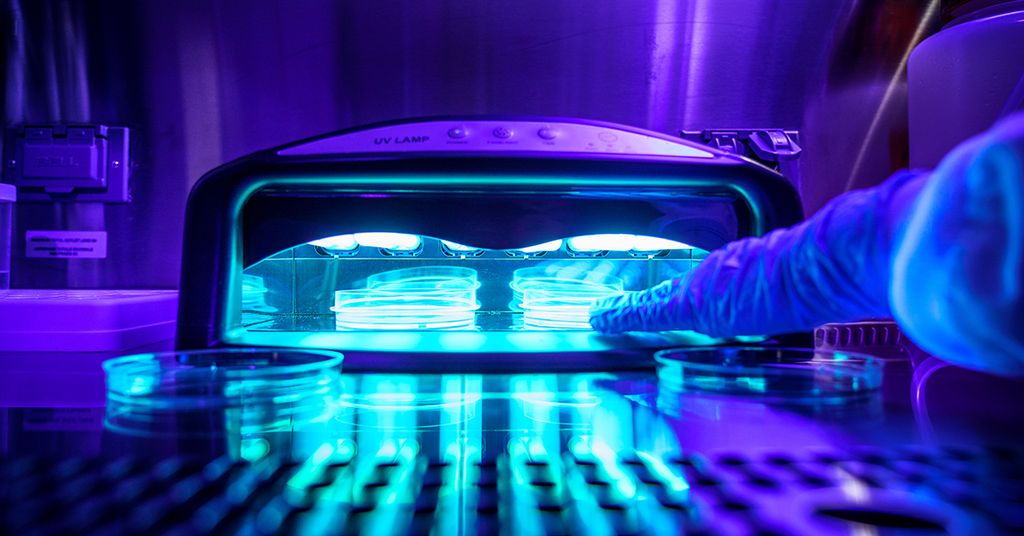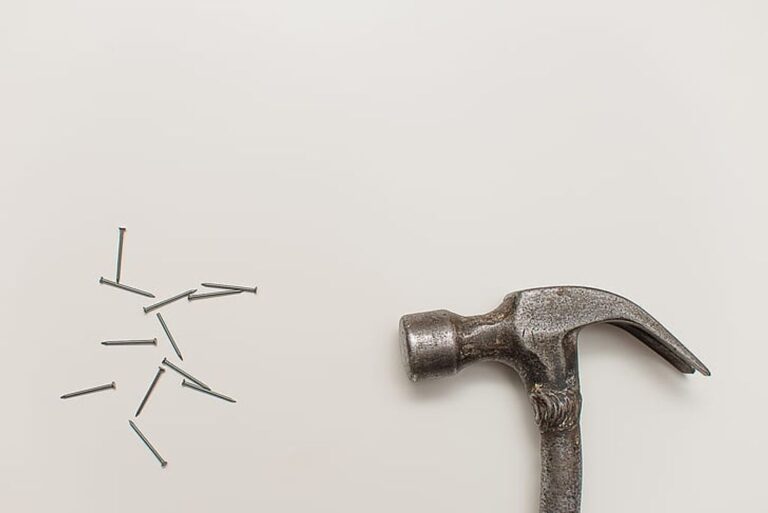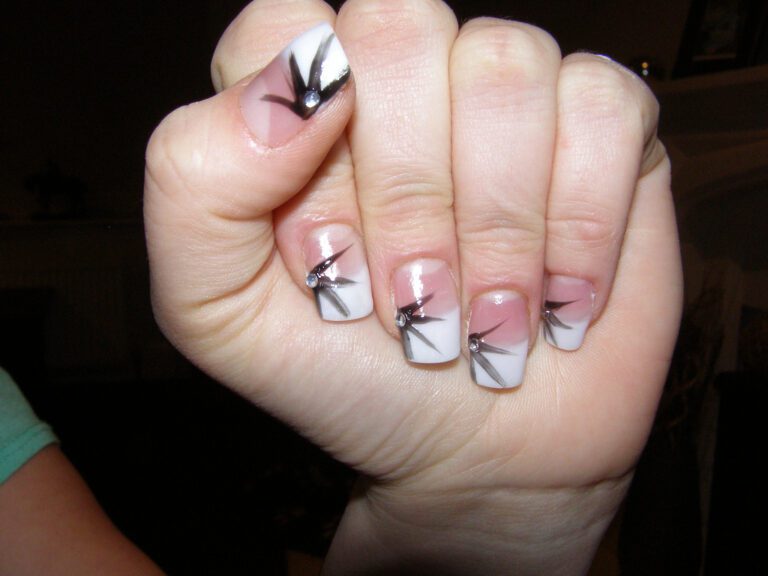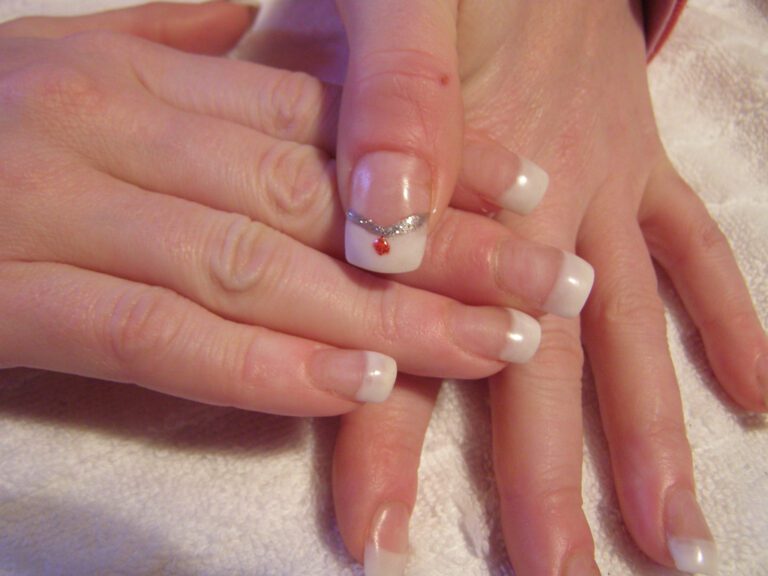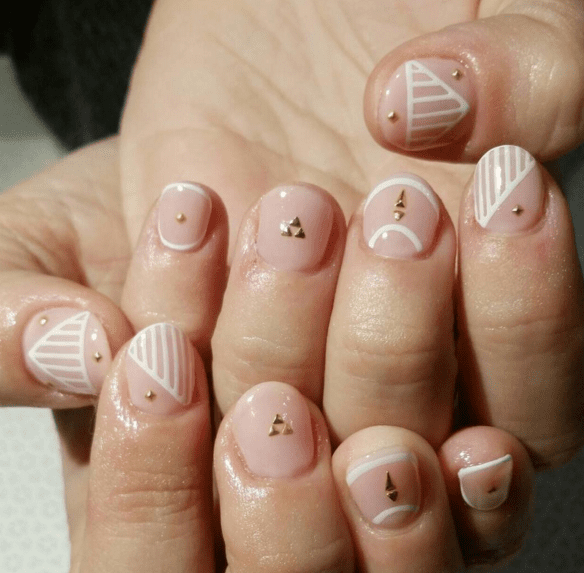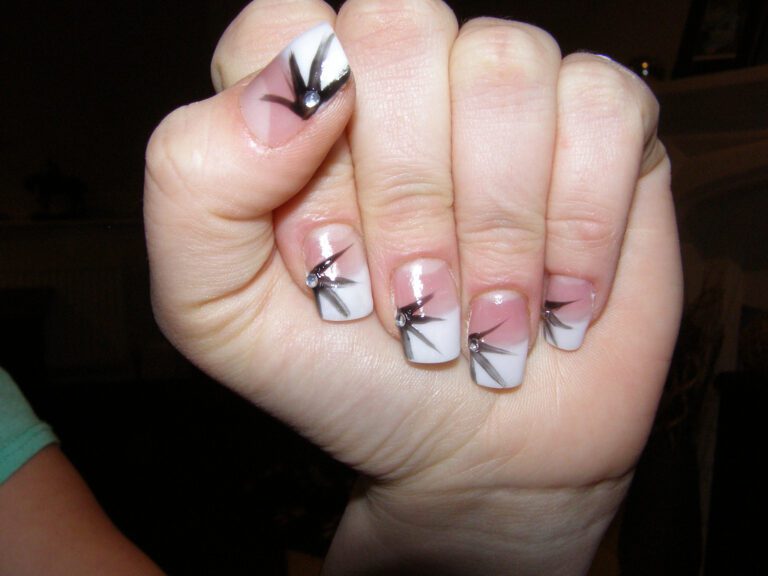“Nail Hunt: Where Nails Are Made”
Nail production is a fascinating process that involves various stages, from raw material sourcing to manufacturing and quality control. This article explores the intricacies of nail production, global manufacturing hubs, technological advancements, economic impacts, specific nail types, and the challenges faced by the industry.
Key Takeaways
- China is the leading global hub for nail production, followed by the United States and emerging markets.
- Technological advancements in nail making have led to automation, innovative designs, and environmental impact reduction techniques.
- The economic impact of nail production is significant, contributing to employment, trade dynamics, and market trends.
- Different nail types have specific manufacturing processes tailored to their intended use, from common nails to hand-forged specialty nails.
- The nail industry faces challenges such as regulatory hurdles, supply chain disruptions, and competition from alternative fastening methods.
The Anatomy of Nail Production

Raw Materials and Sourcing
The journey of nail production begins with the meticulous selection of raw materials, primarily steel or aluminum. These metals are chosen for their durability and malleability, essential qualities for creating nails that can withstand significant force. Sourcing these materials often involves a global supply chain, with countries like China and Turkey being key suppliers of steel.
Quality of the raw material is paramount, as it directly impacts the strength and longevity of the finished nails. Suppliers are typically vetted through a rigorous process that examines their material’s purity and consistency. Once sourced, the raw materials are transported to manufacturing facilities, where they are prepared for the production line.
- Steel: Predominantly used for its strength
- Aluminum: Valued for its lightweight properties
Tip: Always consider the source of the raw materials when assessing the quality of nails, as it can significantly influence their performance.
Manufacturing Processes
The journey from raw material to finished nail is a testament to modern manufacturing ingenuity. Nail-making begins with the selection of high-quality wire rods, often made from steel grades like SAE1008, which are then drawn through a series of dies to reduce their diameter and increase their length, resulting in a strong, malleable nail wire.
Once the wire reaches the desired thickness, it’s fed into stamping machines that cut and shape the wire into nails. The precision of these machines ensures that each nail is cut to the correct length and that the heads are formed to provide a reliable surface for hammering. The points are then sharpened, and the nails are finished with various coatings to prevent corrosion.
Quality and efficiency are paramount in this process, with each step closely monitored to ensure the nails meet stringent standards. Here’s a simplified overview of the nail manufacturing process:
- Selection of quality wire rod
- Wire drawing to reduce diameter
- Cutting and shaping into nails
- Head forming and point sharpening
- Application of anti-corrosive coatings
Tip: Regular maintenance of machinery and adherence to safety protocols are crucial for optimal production and worker safety.
Quality Control Measures
Ensuring the integrity of nail production is paramount, and this is where quality control measures come into play. These measures are designed to maintain the highest standards of product consistency and safety. From the raw material stage to the final product, each phase is scrutinized for adherence to predefined specifications.
Regular inspections are a cornerstone of quality control, with particular attention paid to the wire rod used in nail making. It is essential that the wire rod is free from defects and meets all material requirements before proceeding to the manufacturing phase. Monitoring continues throughout the production process, with each step being carefully observed to prevent any deviations from the set standards.
The implementation of quality control measures simplifies the process of ensuring that the nails produced align with industry benchmarks and customer expectations. A typical quality control checklist might include:
- Visual inspection for physical defects
- Dimensional accuracy checks
- Material composition analysis
- Performance testing under stress conditions
Tip: Consistent quality control is not just about detecting defects; it’s about preventing them. Establishing proactive measures can significantly reduce the risk of non-conformity and enhance overall product quality.
Global Nail Manufacturing Hubs

China: The Giant in Nail Production
China’s prominence in the global nail production industry is undeniable. With a vast network of factories and a significant labor force, China has become the world’s leading producer of nails. The country’s manufacturing capabilities are not only vast but also diverse, catering to both domestic and international markets with a wide range of nail products.
The efficiency of China’s nail production is reflected in its ability to scale operations and quickly adapt to market demands. This agility is partly due to the strategic placement of factories in industrial zones with access to essential raw materials and transportation networks. Moreover, Chinese manufacturers have invested heavily in automation, which has further bolstered their output capacity.
- Economic Scale: China’s nail industry benefits from the country’s large-scale economy, which can drive down costs.
- Workforce: A substantial workforce allows for the operation of extensive factory shifts, increasing production rates.
- Innovation: Continuous investment in research and development leads to innovative nail production techniques.
Tip: Businesses looking to source nails at competitive prices and with reliable delivery schedules should consider partnerships with established Chinese manufacturers.
While China’s nail production prowess is a cornerstone of its industrial landscape, it also presents challenges such as maintaining quality standards and managing environmental impacts. Nevertheless, the country’s manufacturers continue to play a pivotal role in meeting the global demand for nails.
The United States’ Role in Nail Supply
While not as dominant as China in terms of volume, the United States plays a pivotal role in the global nail supply chain. American companies are known for their innovation in nail manufacturing, often leading the way in the development of new nail types and enhancements. The U.S. market is characterized by its high demand for quality and specific standards, influencing nail production practices worldwide.
The U.S. nail industry supports a diverse workforce, with a significant number of jobs tied to both manufacturing and distribution. It’s a sector that not only caters to domestic needs but also exports a considerable amount of its production to international markets. The following points highlight the U.S. contribution to the nail industry:
- Development and adoption of advanced manufacturing technologies
- Stringent quality control protocols ensuring product reliability
- A focus on sustainable practices and reducing environmental impact
Tip: When selecting nails for a project, consider the origin of manufacture as it can be indicative of the quality and the environmental standards adhered to during production.
Emerging Markets in Nail Manufacturing
Emerging markets in nail manufacturing are experiencing rapid growth and are becoming significant players in the global nail industry. Countries such as India, Brazil, and Vietnam are witnessing a surge in nail production, driven by increasing demand for construction materials and products. The availability of skilled labor and favorable government policies are contributing to the expansion of these markets. Additionally, these emerging markets are attracting investments from international nail manufacturers, leading to the establishment of new production facilities and partnerships. This trend is reshaping the landscape of nail manufacturing and is poised to impact the global supply chain dynamics.
Technological Advancements in Nail Making

Automation in Nail Factories
The advent of automation in nail factories has revolutionized the production process, leading to significant gains in efficiency and consistency. Robotic systems have been integrated into various stages of nail manufacturing, from sorting and packaging to the actual nailing process itself. These systems are designed to operate with precision and at speeds that far surpass manual labor.
One of the most notable implementations of automation is the Robotic Pallet Nailing Machine, which exemplifies the industry’s move towards full automation. This machine leverages the capabilities of industrial robots to deliver a fully automatic pallet nailing process that maintains high-quality standards.
- Increased Production Speeds
- Reduced Labor Costs
- Enhanced Product Consistency
- Improved Workplace Safety
Automation not only streamlines production but also minimizes the risk of human error, ensuring that each nail meets the set quality benchmarks.
Another aspect of automation is the packaging of nails for distribution. Nail packing machines can be programmed to automatically package nails into various containers, which then are ready for shipping and retail sale. This level of automation supports the industry’s ability to meet the growing global demand for nails.
Innovations in Nail Design and Durability
Innovations in nail design and durability have revolutionized the nail industry, paving the way for enhanced aesthetics and longevity. Manufacturers have embraced cutting-edge technologies to develop nail products that offer superior strength and resilience. These advancements have led to the creation of long-lasting formulas and custom designs that cater to individual preferences and styles. Additionally, the industry’s focus on nail health has prompted the development of environmentally sustainable practices, aligning with the growing demand for eco-friendly beauty solutions. The evolution of nail art technology has not only elevated the artistic expression of nail designs but has also contributed to the overall durability and practicality of nail enhancements.
Environmental Impact Reduction Techniques
Technological advancements in nail making have led to significant reductions in environmental impact. Automation has allowed for more efficient use of resources, while innovations in nail design and durability have contributed to [sustainable manufacturing practices](https://www.trvst.world/sustainable-living/environmental-impact-of-cosmetics/). Environmental impact reduction techniques are a key focus in the nail industry, with a strong emphasis on minimizing waste and energy consumption. These advancements align with the industry’s commitment to environmental responsibility and sustainability. Implementing a table for presenting structured, quantitative data can further illustrate the positive impact of these advancements.
Economic Impact of Nail Production

Employment and Industry Growth
The nail production industry has been a significant contributor to employment, providing jobs to thousands across various sectors from manufacturing to retail. As the demand for nails continues to rise, so does the opportunity for job creation. The industry’s growth is not just limited to direct employment; it also stimulates ancillary sectors such as raw material supply and equipment manufacturing.
In recent years, the industry has seen a notable expansion, with market reports indicating a steady increase in revenue. For instance, the global nail salon market size reached US$ 11.7 Billion in 2022 and is expected to grow further. This growth translates into more job opportunities and a boost to local economies.
Key Employment Statistics:
- Number of nail production facilities
- Total employment in the sector
- Year-over-year growth in job creation
Tip: For those looking to enter the nail industry, it’s important to focus on skill development and staying abreast of the latest trends and technologies to remain competitive in the job market.
Trade Dynamics and Market Trends
The nail industry is experiencing a steady increase in demand, driven by evolving consumer preferences and changing fashion trends. Market trends indicate a shift towards eco-friendly and sustainable nail products, reflecting the growing awareness of environmental impact. Additionally, the trade dynamics reveal a notable surge in international nail trade, with key players expanding their market reach across borders. This globalization of the nail market presents both opportunities and challenges for manufacturers and suppliers alike. To illustrate, the table below outlines the top five countries in terms of nail exports and imports, shedding light on the current trade landscape.
The Price of Nails: Cost Factors and Fluctuations
When considering the cost factors and fluctuations in the nail industry, it’s important to understand the various elements that contribute to the pricing of nails. Factors such as raw material costs, manufacturing processes, and market demand play a significant role in determining the price of nails. Additionally, the fluctuation in currency exchange rates and trade dynamics also impact the cost of nails in the global market. Understanding these factors is crucial for businesses and consumers alike to make informed decisions regarding nail products and services.
To illustrate the cost variations, here is a brief breakdown of the average price ranges for different types of nails:
| Nail Type | Average Price Range |
|---|---|
| Common Nails | $0.10 – $0.50 |
| Specialty Nails | $0.50 – $1.50 |
| Hand-Forged Nails | $1.00 – $3.00 |
It’s important to note that these price ranges are approximate and may vary based on specific market conditions and geographical locations.
In conclusion, staying informed about the cost factors and fluctuations in the nail industry is essential for businesses and consumers to navigate the market effectively and make informed decisions regarding nail products and services.
Nail Types and Their Specific Manufacturing Processes

Common Nails and Their Universal Use
Common nails are the workhorse of the fastening world. Their simplicity and strength make them suitable for a wide range of applications in construction and carpentry. Typically made from steel, these nails have a thick shank and a wide, flat head, which provides ample surface area for hammering.
Versatility is the hallmark of common nails. They are used to fasten everything from framing lumber to subfloors and sheathing. The manufacturing process for common nails is streamlined for efficiency, involving the drawing, cutting, and forming of wire into the desired lengths and diameters.
Always choose the appropriate size and type of nail for your project to ensure the best hold and to prevent wood splitting.
The following list outlines the common sizes of nails and their typical uses:
- 2d (1 inch): Small craft projects
- 6d (2 inches): Cabinet and trim work
- 10d (3 inches): Framing and structural work
- 16d (3.5 inches): Heavy-duty construction
Specialty Nails: From Roofing to Finishing
Specialty nails cater to specific construction needs, from roofing to intricate finishing work. Each type of nail is designed with a particular function in mind, ensuring optimal performance for its intended application. For example, roofing nails are typically characterized by a larger head and a shorter shank to provide better holding power against harsh weather conditions.
Finish nails, on the other hand, are slender with a small head, making them ideal for delicate trim and molding work where a discreet appearance is desired. These nails must be driven with precision to avoid splitting the wood and to ensure a clean, professional look.
Tip: When selecting specialty nails, consider the material they will be fastening and the environmental conditions they will endure.
The following list highlights some common specialty nails and their uses:
- Roofing Nails: Used for attaching shingles, underlayment, and insulation to roofs.
- Finish Nails: Perfect for interior trim, baseboards, and crown molding.
- Trim Nails: Often used for exterior applications such as securing soffit and fascia.
Manufacturers often offer these nails in various sizes and materials to match the demands of different projects. For instance, galvanized nails are preferred for outdoor use due to their resistance to rust and corrosion.
The Craft of Hand-Forged Nails
In the realm of nail manufacturing, the art of hand-forging represents a niche that harkens back to traditional craftsmanship. These nails are often sought after for their unique aesthetic and the personal touch they bring to woodworking and restoration projects. Hand-forged nails are typically made from wrought iron or steel, shaped and hammered by skilled artisans.
The process of creating a hand-forged nail involves several steps, each requiring a steady hand and an eye for detail. Here’s a brief overview:
- Selecting the appropriate metal stock
- Heating the metal in a forge
- Hammering the metal to form the nail’s shape
- Sharpening the point
- Creating the nail head
- Cooling and finishing the nail
While the production of hand-forged nails is labor-intensive, it allows for a level of customization that machine-made nails cannot match. > Note: When choosing hand-forged nails, consider the specific requirements of your project to ensure the best fit and finish.
Despite their charm, hand-forged nails are a rarity in modern construction, often replaced by mass-produced alternatives. However, for those who value authenticity and craftsmanship, hand-forged nails offer an irreplaceable link to the past.
Challenges Facing the Nail Industry
Regulatory Hurdles and Compliance
Regulatory hurdles and [compliance](https://astropak.com/understanding-the-modernization-of-cosmetics-regulation-act/) are significant challenges in the nail industry. Ensuring compliance with regulations and standards is crucial for maintaining quality and safety. This involves adhering to strict guidelines for raw materials, manufacturing processes, and product labeling. Additionally, staying updated with regulatory changes and implementing necessary adjustments is essential for long-term sustainability.
To navigate these challenges effectively, nail manufacturers and suppliers must prioritize continuous monitoring and adaptation to regulatory requirements. This includes regular audits, documentation of compliance measures, and proactive engagement with regulatory authorities to address any emerging issues.
In the context of global trade, harmonizing regulatory standards across different regions presents a complex task. However, it is imperative for the industry to strive for alignment and mutual recognition of compliance measures to facilitate international trade and ensure consumer protection.
- Implement a table for presenting structured, quantitative data. Ensure it’s succinct and formatted correctly in Markdown.
- Use a bulleted or numbered list for less structured content, like steps, qualitative points, or a series of related items.
Proactive engagement with regulatory authorities is key to addressing emerging issues and ensuring compliance with evolving standards.
Supply Chain Disruptions
Supply chain disruptions in the nail industry have highlighted the vulnerabilities in the distribution network. Fluctuations in raw material supply and transportation delays have led to significant challenges in maintaining a consistent flow of nail products to the market. Additionally, the reliance on international suppliers has exposed the industry to geopolitical and economic risks. To mitigate these disruptions, nail manufacturers are exploring alternative sourcing strategies and investing in inventory management systems to enhance resilience. Adopting a diversified supplier base and implementing agile logistics solutions are crucial steps in addressing the complexities of supply chain disruptions in the nail industry.
Competition from Alternative Fastening Methods
Competition from alternative fastening methods poses a significant challenge to the nail industry. The market contends with the presence of alternative framing methods, such as screw fastening systems, which may compete with traditional nail guns. Quality concerns, including durability and functionality, influence market penetration. To address these challenges, the industry must focus on innovation, product differentiation, and quality assurance to maintain its competitive edge.
The nail industry faces a myriad of challenges in today’s fast-paced world. From increasing competition to changing consumer preferences, nail salons and professionals are constantly adapting to stay ahead. At NAILinspire.com, we understand these challenges and are committed to providing the ultimate online nail art design library to inspire and support nail artists worldwide. Whether you’re a seasoned professional or an aspiring nail artist, our collection of designs, tutorials, and resources will help you elevate your craft. Join us at NAILinspire.com and be part of a vibrant community dedicated to the art of nail design.
Frequently Asked Questions
Where are most nails made?
Most nails are made in China, followed by the United States and other emerging markets.
What are the common raw materials used in nail production?
Common raw materials used in nail production include steel wire, iron, and stainless steel.
How are nails manufactured?
Nails are manufactured through processes such as wire drawing, nail heading, and surface treatment.
What are the environmental impacts of nail production?
Nail production can have environmental impacts, but technological advancements have led to reduction techniques and sustainable practices.
What are the different types of nails and their uses?
There are various types of nails, including common nails for general use, specialty nails for specific applications like roofing, and hand-forged nails for artisanal purposes.
What challenges does the nail industry face?
The nail industry faces challenges such as regulatory hurdles, supply chain disruptions, and competition from alternative fastening methods.

